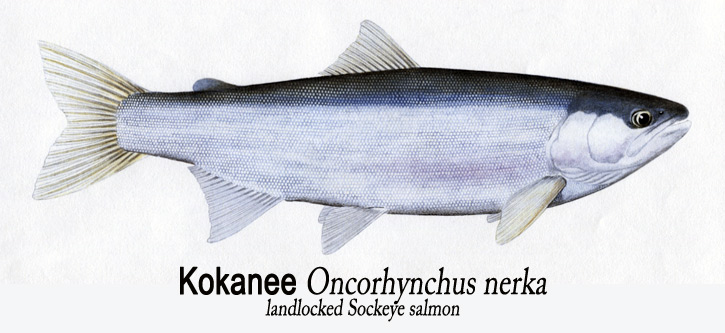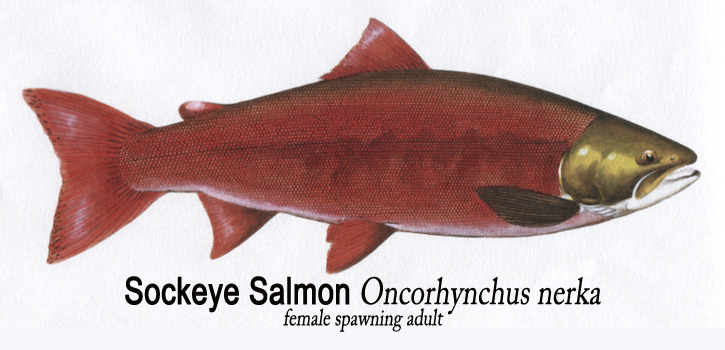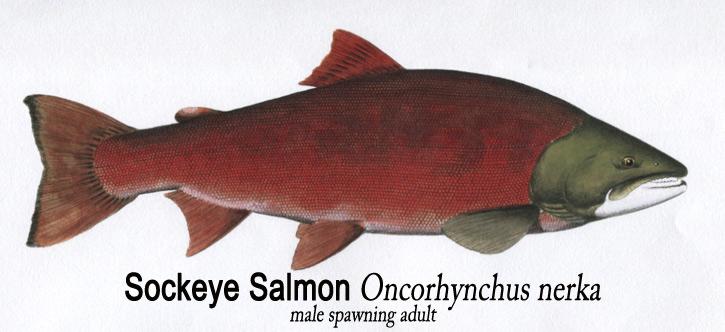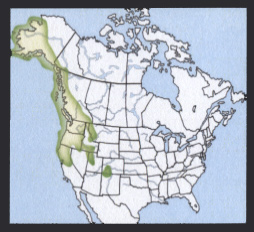Sockeye Salmon & Kokanee, April 2012, Fish of the Month!


 Sockeye salmonand Kokanee (landlocked Sockeye salmon)
Sockeye salmonand Kokanee (landlocked Sockeye salmon)
Oncorhynchus nerka
Local Names:
Blue-Back, Blueback, Blueback salmon, Red salmon, Little Redfish, Redfish, Pygmy salmon, Kickininee, Koke, silver trout
Average Size:
Sockeye: 22to 28 inches
Kokanee: 12 to 18 inches
Sockeye: 4 to 8 pounds
Kokanee: ¾ pound. to 2 pounds
Distinguishing Field Marks:
Color and color pattern are reliable distinguishing field marks for this species. (See the illustration.)
-
Non-spawning adult Sockeye and Kokanee salmon have blue-green backs over silver sides and white bellies. with a very few small black spots on their backs and none on their heads or fins.
- Spawning adults are bright red with green heads.

North American Range:
Map to the right shows approximate range in North America.
Diet:
In fresh water, migratory Sockeye salmon and Kokanee, feed almost exclusively on zooplankton. Even at sea, Sockeye salmon feed mainly on smaller foods, the largest being small and immature fish.
Fly Fishing for Sockeye & Kokanee:
The Sockeye is another “lesser” species of Pacific salmon that has just recently come to the attention of fly-fishers. They are a prime game fish, with the males especially becoming aggressive in fresh water. A growing number of fly patterns for Sockeye, with new ones still coming on-line, is currently being developed. Anglers visiting rivers that host runs of Sockeye are advised to contact local fly shops to learn what are the best patterns for that specific water. If you’re specifically targeting Sockeyes, you’ll want to use 6 to 7 weight balanced outfits with sink-tip lines to get the fly down.
Fishing for Kokanee will require the use of a boat or other small watercraft. Like all landlocked salmonids, Kokanee will be found in water at their preferred temperature of 50 degrees F. Kokanee form schools as they search for food, so locating these is critical to success. The best time of year? Spring, when the lakes they inhabit are “turned-over” and are about the same cool temperature throughout. When you locate a school, small streamer or wet flies on light 5 to 6 weight tackle are the likely best bets for catching Kokanee.






